Table of Contents
An eLearning platform bridges the divide between learners and teachers. You might wonder why that is. Well, such a platform helps to break down geographical barriers, time restrictions, and pressing learning challenges.
But how can you design a platform that indeed provides a smooth learning experience similar to traditional education? How can you create a system that reduces the time spent on course creation, management, and evaluation while automating routine tasks for instructors?
Let’s explore these questions in depth, discussing the key features, the steps to take, the costs involved, and the reasons why you might want to develop your own online learning platform.
Why is it worth it to build your own eLearning platform?
To begin with, a company seeking a digital learning solution has two main options. The first is to use existing online learning platform available on the market. The second option is to create a customised solution tailored to the company’s specific needs.

At first glance, the first option tends to be simpler and more cost-effective, as the company receives a pre-built learning management system from an external provider without worrying about maintenance or updates. However, custom development is often a wiser long-term strategy for larger companies due to several key benefits:
Customisation
Pre-built and cloud-based eLearning platforms offer extensive and adaptable features for managing the online learning process. However, no external platform can fully address the specific requirements and unique characteristics of every business. Only custom development from the ground up can ensure that all these individual needs are met.
Learn more about the benefits of a learning management system
Scalability
Off-the-shelf software can be a practical solution for immediate needs, particularly for smaller projects. However, as online learning sector expands, relying on pre-built learning management systems may lead to technical and organisational challenges within larger organisations.
Cost efficiency
Many believe that using ready-made software from a vendor is far quicker and more cost-effective than developing a custom solution from the ground up. However, this assumption no longer holds true. With modern no-code platforms, you can quickly build an MVP and test your ideas without breaking the bank.
You can compare the prices of adopting vs building a learning management system
Independence
Choosing a pre-built solution means a business inevitably depends on the technologies and offerings of the software vendor. Over time, this reliance can expose the company to various risks and restrict its future growth and direction.
Cybersecurity
Training processes frequently involve handling sensitive data tied to a company’s internal operations. Not all businesses are comfortable entrusting this information to third-party online learning platforms or cloud services. By developing a custom educational platform, a company gains control over data security according to its own standards.
In practice, the benefits of an eLearning platform are most fully realised through custom development. This type of platform can either be created by the company’s own IT team or in collaboration with a seasoned external vendor.
What are the types of eLearning platforms?
MOOCs
Massive Open Online Courses (MOOCs) provide students with access to extensive global learning environments, including lectures, readings, assignments, and interactive activities. They also feature user forums and social media interactions to facilitate communication among students, professors, and teaching assistants.
Course marketplace
A course marketplace is an online platform where individuals and companies can create, sell, and purchase courses on various subjects. These platforms serve as both a venue for learners to discover and enrol in courses and a space for course creators to design and promote their offerings. Some of the notable examples include:
- Teachable: This platform offers extensive marketing capabilities, customisable course pages, and integrated payment options.
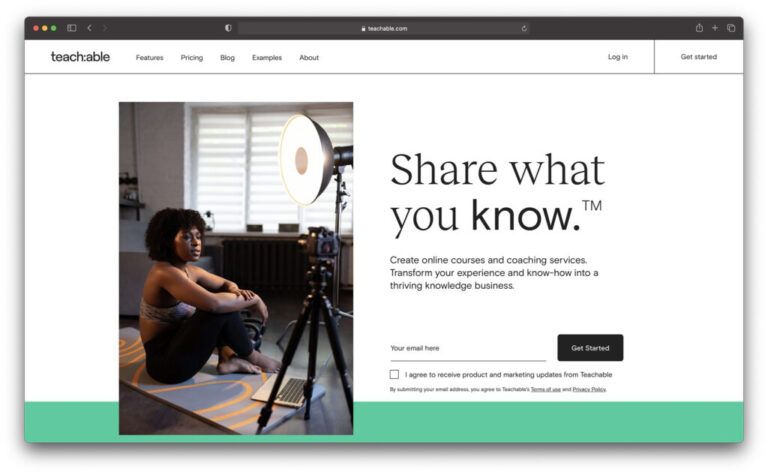
- Mighty Networks: While primarily focused on building paid communities, Mighty Networks also provides tools for creating and marketing online courses, allowing users to engage with their audience and share valuable content.
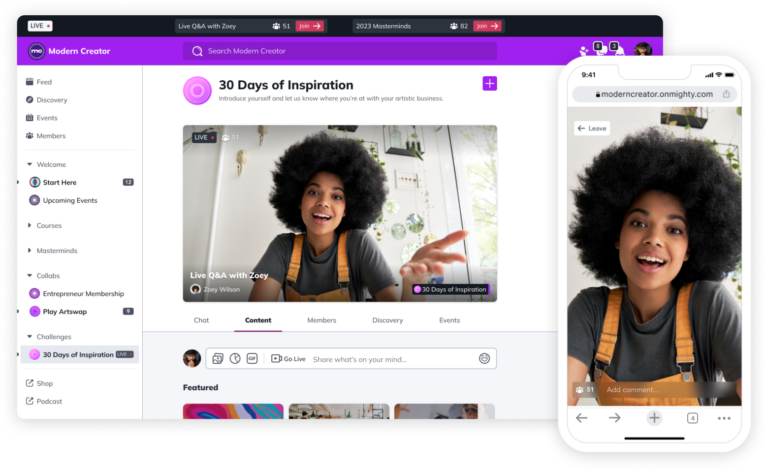
Virtual learning environments
A Virtual Learning Environment (VLE) is an online platform designed to support institutions with the digital aspects of their curricula. It provides a structured space for organising and delivering course materials, activities, and interactions. VLEs often integrate with other institutional systems and support various stages of assessment. Here are some examples that offer collaborative digital spaces for students and educators:
- Blackboard: This platform provides a range of learning tools accessible via both the web and the application.
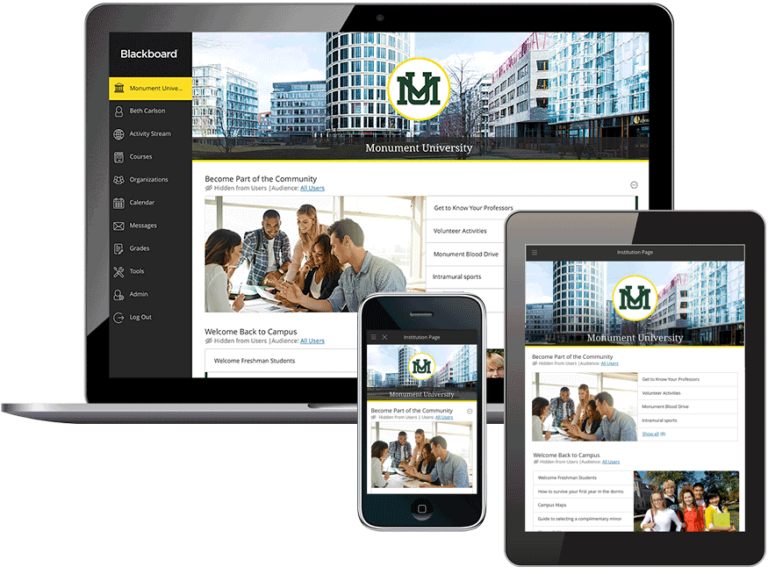
- Moodle: An open-source learning management system that is free to use. Many institutions and universities prefer Moodle for its robust administrative functionalities.
AI powered learning platforms
These platforms use AI and ML to deliver personalised instruction and support to students. They evaluate student performance and provide tailored advice and feedback. Organisations such as DreamBox offer AI-powered teaching solutions.
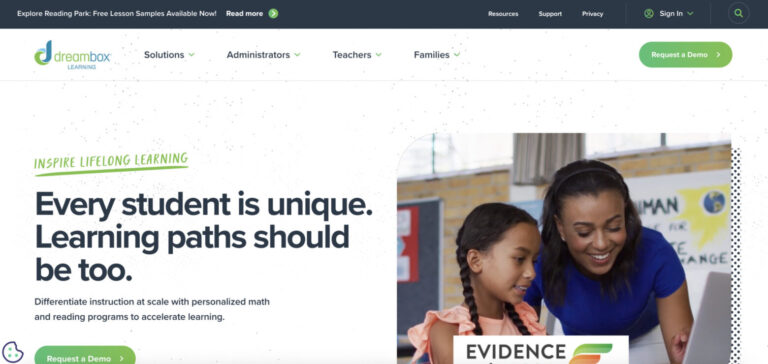
Duolingo is another notable example.

Online group learning
Online group learning systems enable collaborative learning experiences by providing tools for teamwork, group discussions, and shared resources. Programs such as Microsoft Teams and Google Workspace support this form of group learning.
Read more what is MVP, and why do you need it.Discussion boards
Discussion board platforms create a space for asynchronous online interactions. These platforms are often used in educational settings to support class discussions and Q&A sessions.
- Reddit: A network of communities where users can explore and engage with a wide range of interests, hobbies, and passions.

Podcast platforms
Podcast platforms offer audio-based courses and are especially popular for delivering educational content, hosting interviews, and sharing stories. Some of the most well-known platforms include:

Webinar platforms
Webinar services allow for interactive presentations and seminars, either live or recorded. These platforms are commonly used for online training, conferences, and workshops. Notable examples include:
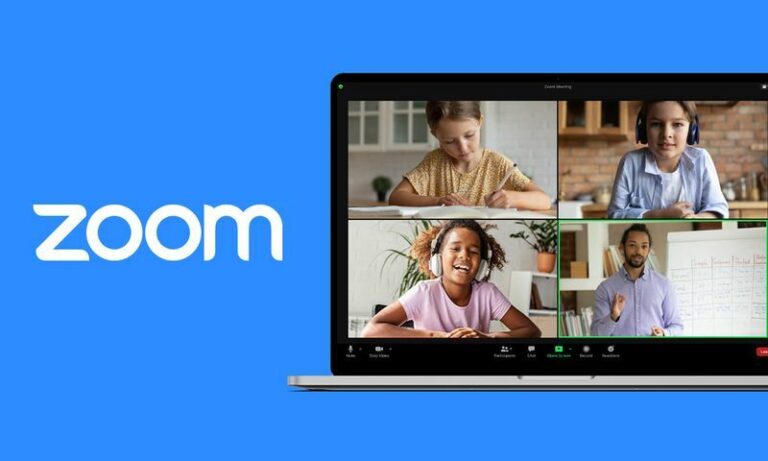
Video-based eLearning platforms
Nowadays, learning is not all about tests and lectures. Educational video courses are offered through video-based learning platforms, which may also include features for quizzes, exercises, and discussions related to the video content. Examples of such platforms are TED-Ed and Khan Academy.Building eLearning Platform: essential features
Many professional eLearning platforms come with various features designed to provide users convenient and effective access to learning materials. While these features can vary between platforms, it’s important to tailor them to align with your specific strategy and target audience. Here are a few examples to consider.

Video
An effective eLearning platform needs a reliable audio-video system that supports two-way communication between the instructor and students.
Interactive board
An interactive whiteboard supporting two-way communication is a must have feature for teachers and students. It enables them to share key definitions, make notes, and complete exercises during class.
Notifications
Notifications help students to keep them updated. They should receive regular updates about any changes in their courses. For example, sending reminders before each class helps to lower the absence rates.
Knowledge base
This feature enables users to gather essential materials related to the topic they are studying. It is particularly helpful for reviewing content and staying updated with all educational resources.
Chat
An eLearning platform should include a chat feature to facilitate continuous communication between users, allowing them to ask questions, engage in discussions, and interact in real-time.
Dashboard
If your eLearning platform offers multiple courses, users should be able to easily access each of them. A well-designed dashboard with an intuitive user experience helps users use the platform efficiently. It should allow users to select a course, view all relevant information, and resume their progress from where they left off.
What are the monetisation models of eLearning platforms?
Understanding the monetisation models of eLearning platforms is important for both educators and entrepreneurs looking to make the most out of their digital education ventures. As the online education industry grows, various revenue strategies have emerged, each tailored to different platforms and audience needs.
Paid certificates
Offering paid certificates is a popular way to monetise an eLearning platform. In this model, learners pay a fee to obtain a certificate upon completing a course or program. These certificates can be valuable for learners who are looking to improves their resumes or gain recognition for their skills.
Benefits:
- Generates revenue per certification issued.
- Encourages learners to complete courses to earn a credential.
- Can be integrated with industry-recognised certification standards to increase value.
Subscription-based
A subscription-based model covers charging users a recurring fee, typically monthly or annually, to access a library of courses or educational content. This model ensures a steady stream of income and can provide learners with continuous access to new and updated materials.
Benefits:
- Provides predictable and stable revenue.
- Encourages ongoing engagement with the platform.
- Allows for access to a broad range of content, attracting diverse learners.
Affiliate model
In this case, your LMS can partner with other companies or educational institutions to promote their courses or products. You earn a commission for each sale or lead generated through your platform. This can be a great way to diversify income streams without having to create all the content yourself.
Benefits:
- Generates revenue through partnerships and referrals.
- Expands course offerings without additional content creation costs.
- Can attract more users through diverse, high-quality offerings.
Corporate collaboration
Corporate collaboration involves partnering with businesses to provide training solutions for their employees. Companies can pay for bulk access to courses or custom training programs tailored to their specific needs. This model often includes premium features or dedicated support for corporate clients.
Benefits:
- Generates significant revenue through corporate contracts.
- Offers opportunities for long-term business relationships.
- Provides customised solutions that can be highly valuable to organisations.
Paid courses
In the paid courses model, individual courses or modules are offered for a one-time fee. Users can select and purchase specific courses based on their interests or needs, providing flexibility and choice.
Benefits:
- Allows users to pay only for the content they want.
- Provides a one-time revenue boost per course sold.
- Can attract learners who prefer not to commit to a subscription.
Combining models
Many eLearning platforms use a combination of these monetisation strategies to maximise revenue and appeal to a wider audience. For example, a platform might offer a subscription for general access, paid certificates for course completions, and corporate training solutions for businesses.
By exploring and integrating these monetisation strategies, you can create a robust financial model that supports the growth and sustainability of your eLearning management system.
What is the cost of online learning platform development?
Firstly, it’s important to note that the cost of an eLearning platform can vary significantly based on several factors. Here are some key elements to consider:
- Platform scope: Basic features like user registration, content delivery, and assessments typically incur lower costs. However, integrating advanced features such as gamification, AI-driven personalised learning paths, or virtual reality can increase expenses.
- Feature set: More features, such as social networking, real-time collaboration tools, and advanced analytics, will drive up the costs.
- Design and user experience: Investing in a well-designed and engaging user interface helps maintain user retention and engagement.
- Content creation and management: High-quality content, including videos, interactive simulations, tests, and real-time interactions, requires a larger investment.
- Technology stack: The choice of programming languages, frameworks, and tools can affect the final costs. Some technologies may require more time and expertise to implement.
- Mobile responsiveness: Ensuring the platform works well on various devices, such as smartphones and tablets, can lead to higher development costs.
- Security requirements: Protecting user data and adhering to data protection regulations can increase costs. Platforms aimed at children, for instance, must comply with additional regulations, such as HIPAA, for healthcare-related edutainment.
- Integration needs: Costs may rise if your platform requires integration with other systems, like third-party APIs or analytics tools.
- Scalability and performance: Developing a platform capable of handling many users and extensive content can add to the overall cost.
- Testing and quality assurance: Comprehensive testing to ensure performance, usability, and privacy across different platforms and browsers can increase development expenses.
- Maintenance and support: Ongoing costs for support, content updates, and feature additions need to be considered beyond the initial development phase.
- Compliance and regulations: Platforms handling sensitive data or targeting specific industries (e.g.,healthcare or finance) may face additional compliance costs.
- Geographic location of development team: Development costs can vary based on the location of your team, whether in-house or outsourced. Exploring options like outsourcing to Eastern Europe might be beneficial.
- Project timeline: Projects with tight deadlines may require more resources and could result in higher costs.
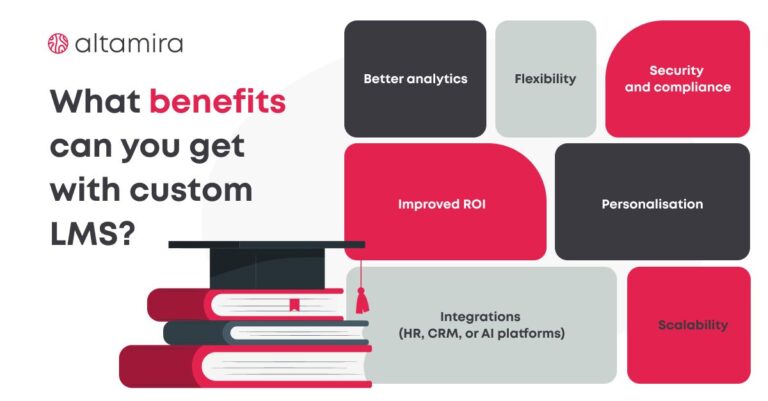
What are the key steps to guide for a successful eLearning software?
Launching the development of an eLearning app is a challenging endeavour. Although the wide range of possibilities is exhilarating, you must have reliable plan for further action. Below, we’ve summarised the key steps to navigate the early stages of designing an outstanding learning experience for your users.

Step 1. Understand your target audience
Before initiating the development process, you have to understand its intended audience. Remember that your audience will dictate the design, functionality, and features of your platform.
Who is your target audience? Are you designing the platform for school students, professionals seeking to enhance their skills, people eager to explore their interests, or a niche experts with particular learning needs? Identifying your primary audience will greatly impact the platform’s structure and content.
Moreover, understanding your audience covers more than just identifying who they are. You need to delve into their needs, preferences, and learning styles. For example, students might benefit from interactive quizzes, while professionals may prefer case studies or simulations. You can achieve higher engagement and success by customising your platform to meet your audience’s needs and preferences.
Step 2. Choose content strategy
With a clear understanding of your audience, it’s high time to develop a content strategy that resonates with them. Begin by curating your offerings to ensure they are both varied and engaging.
- Planning the curriculum: Start by outlining the main topics and modules you intend to cover. This plan will serve as a guide for both content creators and learners, providing a structured path.
- Selecting formats: There are numerous content formats available today—such as videos, podcasts, eBooks, interactive quizzes, simulations, and webinars. Choose the formats that best suit your audience’s preferences and the subject matter. For example, videos might be the perfect option for technical topics, while interactive quizzes could improve learning for kids.
- Ensuring quality: Even if your platform is advanced and user-friendly, poor content quality will hinder its success. Invest in skilled content creators, ensure the accuracy of the material, and update it regularly to maintain relevance.
Step 3. Assess budget and resources
Developing an eLearning solution, like any major project, requires meticulous financial planning. It’s not just about the total amount you’re prepared to spend but also how you allocate those funds.
- Establish a clear budget: Set an overall budget that balances your financial capacity and the resources needed to realise your vision.
- Resource allocation: Know your priorities. Although investing in an attractive design is appealing, remember that content quality is paramount. Additionally, ensure that you allocate funds for post-launch marketing and ongoing maintenance, as these are as essential as the development phase.
Step 4. Hire dedicated developers
After laying the groundwork, it’s time to enlist the experts who will bring your vision to life. Developing an eLearning platform is a complex task, and having a dedicated team of developers can significantly enhance the process.
- Outsourcing web developers: Outsourcing is a great solution if your in-house team lacks the required expertise. Outsourced developers often bring extensive experience from various projects, offering new perspectives and innovative solutions.
Altamira has a proven history in the e-learning industry, with a team focusing on quality, timely delivery, and ongoing support to ensure that your platform consistently adapts to the evolving EdTech market.
Step 5. Choose core technologies
Choosing the right technological foundation in the cornerstone for further stability and growth of your eLearning platform.
- Languages: HTML, CSS, and JavaScript are a common trio of web development. HTML forms the core structure of your site, providing its basic framework. CSS then adds visual appeal by applying styles and colours. JavaScript brings interactivity and dynamic content changes, making the site engaging and functional.
At the heart of our innovation lies a versatile tech stack, carefully selected to drive efficiency, scalability, and security across all our operations.
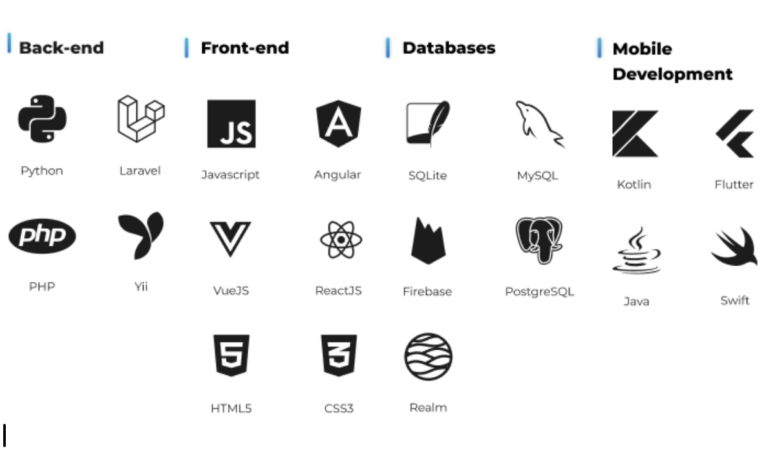
- Frameworks: With your foundational elements in place, frameworks can help streamline development. Frameworks like Angular or React speed up the development process and offer reusable code structures, resulting in quicker, consistent, and more reliable outcomes.
Step 6. Design the platform
Design is more than just aesthetics; it’s about crafting a practical and user-friendly environment. For eLearning platforms, this means creating an intuitive, engaging interface and supporting the learning process.
- UX/UI principles: User experience and user interface are central to the design. UX focuses on the overall user journey, while UI is concerned with the specific elements users interact with.
- Responsive design: Today, learners might access your platform on various devices, from desktops to smartphones.
- Integrating multimedia: Learning has evolved beyond text-heavy materials. Today’s learners benefit from multimedia elements like videos, audio clips, infographics, and interactive simulations. Incorporating these diverse formats can enrich the learning experience and make it more engaging.
Step 7. Development process
With your design plans ready, it’s time to build the eLearning platform:
- Adopting Agile methodologies: Traditional development was like building a house all at once, with no opportunity for feedback until the end. Agile methodologies, on the other hand, involve regular reviews and adjustments. So, now you build a module, gather feedback, make improvements, and then move on to the next space. This iterative approach helps ensure the final product meets user needs and expectations more effectively.
- Testing: Before launching any eLearning module, it must undergo thorough testing to confirm its functionality, device compatibility, and ease of use.
- Maintenance: The work doesn’t stop once your platform is launched. Just like any complex system requires ongoing maintenance, eLearning platforms need regular updates and support, which includes updating content, fixing issues, and adding new features based on user feedback.
Remember, while the tools, technologies, and methodologies are important, the true value of an eLearning platform lies in its ability to educate, enrich, and empower its users. Keep the learner’s needs at the forefront of your development process.
Final thoughts
In a nutshell, developing an eLearning platform requires thoughtful planning and execution, blending key features such as user-friendly interfaces, content management systems, interactive learning tools, and assessment capabilities.
While the cost of development can vary depending on the platform’s complexity and customisations, smart budgeting and strategic choices—like using open-source tools or outsourcing—can help optimize resources.
As the demand for digital education continues to grow, investing in an eLearning platform is a powerful way to reach broader audiences and facilitate lifelong learning.
At Altamira, we build reliable and scalable EdTech solutions designed to transform traditional learning methods into dynamic digital experiences.
Combining expertise in software development with a deep understanding of educational needs, our team provides customised eLearning platforms that support interactive learning, personalised content delivery, and real-time performance tracking.
Our AI-driven tools offer intelligent tutoring systems, predictive analytics, and automated grading, which help educators identify learning gaps, provide targeted interventions, and optimise teaching strategies for better student performance.






